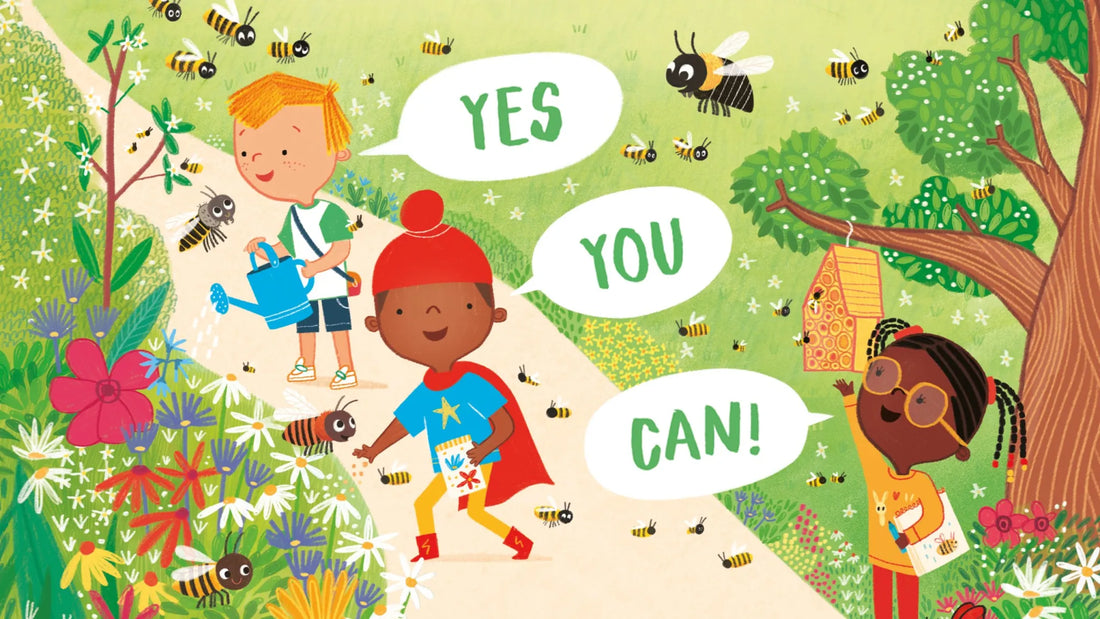Can kids really help the bees and other pollinators?
Have you heard that bees are dying out and worried where your next spoonful of honey is going to come from? Well honey should be the least of your worries! In fact, honeybees are doing just fine. It’s the tens of thousands of other wild bees and other pollinators you should be concerned about.
Many insects such as bumblebees, solitary bees (those that don’t have queens and organised colonies), hoverflies, moths and butterflies have declined a lot in recent years, due to their habitats being destroyed or converted to farmland, over-use of pesticides, and increasingly by climate change.
This should worry us because most of the trees and other plants that take in carbon dioxide and store it are insect pollinated, which could be bad for efforts to reverse climate change.
We should also worry because three quarters of the crops grown around the world that we rely on for food, including most of the fruits and nuts that provide essential vitamins and minerals, need bees and other pollinators to be successful. And most of that pollination is done by wild-living insects.
Though this is worrying, there’s lots that we can do to help pollinators. We can all play a role, especially kids, who are often fascinated by insects. Here are some ideas to get them engaged:
- Pollinators need food. So, grow some nectar and pollen rich flowers in your garden or even in a balcony pot or window box. There’s lots to choose from, suitable for all types of locations. Kids can help with sowing seeds or planting out – they love getting their hands dirty! Some useful plant lists can be found online, for example at the Royal Horticultural Society in the UK, and The Xerces Society in the USA.
- Learn to appreciate the dandelions and daisies in your lawn! They are really important for our pollinators, especially early in the year. Get the kids out counting them every day and make a graph of the number of open flower heads and how it changes over time, the numbers of bees and butterflies they see, etc.
- Once you’ve learned to relax about the dandelions, consider letting other areas of your garden run wild! Long grass, piles of dead wood and prunings from trees will provide places for over-wintering insects to hibernate. If you have room for a small, shallow dish of water, all the better: many bees need to drink and some hoverflies lay their eggs in water. Hoverfly lagoons are a great project for kids.
- Install bee hotels on walls and fences. You can buy them or make your own – there’s lots of instructions online, for example here.
- Help your kids to write to your local council and ask them to stop using herbicides such as glyphosate and reduce the mowing of road verges and park grasslands. If these areas are allowed to flower, they can support hundreds of pollinators.

